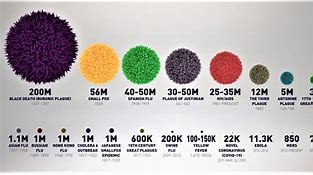
Table of Contents
WHO Lists Over 30 Pathogens That Could Potentially Cause the Next Pandemic in 2024 Report
In its latest 2024 report, the World Health Organization (WHO) has identified over 30 pathogens that possess the potential to trigger the next global pandemic. This comprehensive assessment reflects the organization’s ongoing commitment to pandemic preparedness and its proactive approach to identifying and mitigating emerging infectious threats. The report underscores the importance of global surveillance, research, and preparedness efforts in safeguarding public health.
Overview of the Report
The 2024 report by the WHO provides an updated evaluation of pathogens with pandemic potential, reflecting advancements in epidemiological data, scientific research, and global health monitoring. The list includes a range of viruses, bacteria, and other pathogens that could pose significant threats to global health due to their potential for rapid transmission, high morbidity and mortality rates, and ability to evade existing medical countermeasures.
Categories of Pathogens
The WHO’s report categorizes the listed pathogens into several groups based on their characteristics and potential impact. These categories include:
- Emerging Viral Pathogens: This group consists of newly identified viruses or those that have recently gained prominence due to changes in their transmission patterns or pathogenicity. Examples include:
- Coronaviruses: Beyond SARS-CoV-2, other coronaviruses like SARS-CoV and MERS-CoV are highlighted due to their potential to cause severe respiratory illness.
- Filoviruses: Viruses like Ebola and Marburg are included for their high mortality rates and potential for outbreaks in both endemic and non-endemic regions.
- Arenaviruses: Known for causing viral hemorrhagic fevers, these viruses, such as Lassa and Junin, are included due to their potential for severe outbreaks.
- Re-emerging Pathogens: These are pathogens that were previously under control but have resurged due to factors like drug resistance or changes in environmental conditions. Notable examples are:
- Tuberculosis (TB): Drug-resistant strains of TB pose a significant threat to global health.
- Influenza: Seasonal flu viruses, particularly those that could evolve into pandemic strains, are closely monitored.
- Zoonotic Pathogens: These are diseases transmitted from animals to humans. The report highlights several zoonotic pathogens due to their potential for cross-species transmission and outbreaks:
- Nipah Virus: Known for causing severe encephalitis and respiratory illness, Nipah virus is a concern due to its high fatality rate and potential for outbreaks in regions with bat populations.
- Hantaviruses: These viruses are associated with rodent populations and can cause severe respiratory and hemorrhagic diseases.
- Bacterial Pathogens: Certain bacterial pathogens with pandemic potential are also listed:
- Yersinia pestis: The causative agent of plague, particularly in its pneumonic form, poses a threat due to its potential for rapid human-to-human transmission.
- Vibrio cholerae: The bacterium responsible for cholera is monitored due to its ability to cause severe diarrheal outbreaks.
- Antibiotic-Resistant Pathogens: The rise of antimicrobial resistance is a major concern. Pathogens with increasing resistance to antibiotics are highlighted due to their potential to cause severe, difficult-to-treat infections:
- Methicillin-Resistant Staphylococcus aureus (MRSA): Known for causing serious infections and being resistant to multiple antibiotics.
- Carbapenem-Resistant Enterobacteriaceae (CRE): These bacteria are resistant to a broad range of antibiotics and pose a significant challenge in healthcare settings.
Implications for Global Health
The identification of these pathogens emphasizes the need for a multi-faceted approach to pandemic preparedness and response. Several key implications arise from the report:
- Enhanced Surveillance and Early Detection: Monitoring and detecting emerging pathogens early is crucial for preventing and controlling potential outbreaks. Strengthening global surveillance systems and sharing information across borders are essential components of pandemic preparedness.
- Research and Development: Investment in research and development is vital for understanding the behavior of these pathogens and developing effective vaccines, treatments, and diagnostic tools. The report highlights the need for continued funding and collaboration in scientific research.
- Public Health Infrastructure: Building and maintaining robust public health infrastructure is critical for managing outbreaks. This includes ensuring that healthcare systems are equipped to handle large-scale outbreaks and that health workers are trained to respond effectively.
- International Cooperation: Pandemics are global challenges that require international cooperation. The WHO’s report underscores the importance of collaborative efforts among countries, organizations, and institutions to share resources, knowledge, and expertise.
- Preparedness Plans: Developing and updating preparedness plans, including stockpiling essential supplies and coordinating response strategies, is essential for mitigating the impact of potential pandemics.
Conclusion
The WHO’s 2024 report listing over 30 pathogens with pandemic potential serves as a critical reminder of the ongoing risks posed by infectious diseases. The comprehensive nature of the report reflects the complexity of pandemic preparedness and the need for a proactive and coordinated global approach.
By identifying and prioritizing these pathogens, the WHO aims to guide international efforts in preventing and managing potential pandemics. The report emphasizes the importance of vigilance, research, and collaboration in safeguarding global health and ensuring that the world is better prepared to face future infectious threats.








